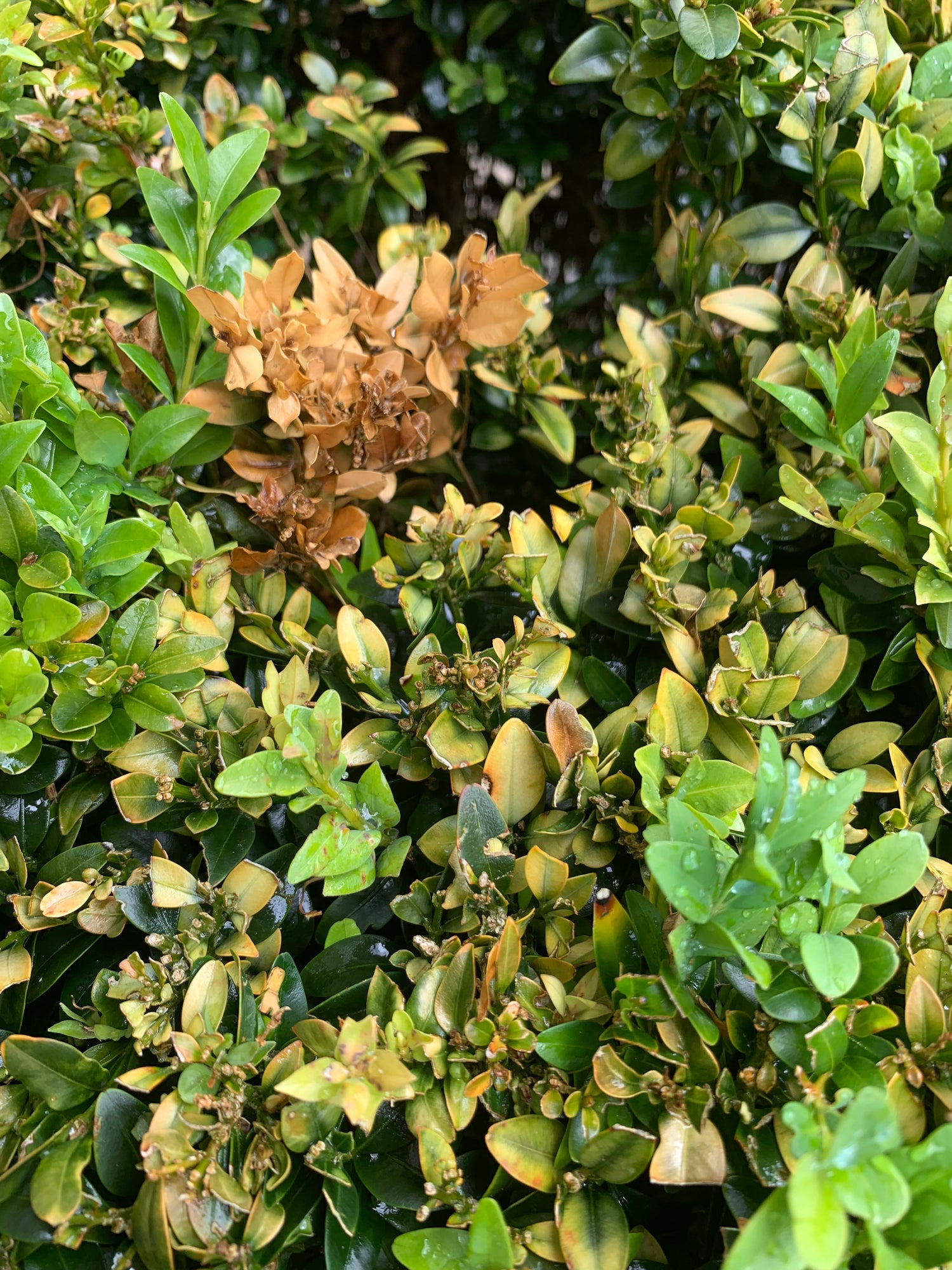What is Buxus Blight?
Buxus blight is caused by a fungus that attacks Buxus plants. In New Zealand, they first came to horticulturists’ attention in the mid-1990s and by 2002 they were well reported in the country. It is thought that the blight is limited to the North Island and possibly Dunedin.
Buxus blight initially presents as dark or light brown spots or lesions on leaves. On young leaves, the early stage of blight can be recognised by the orange-brown spots appearing. The leaves typically turn brown or straw colour before they fall off, after which vertical black stripes will appear on the stems and develop dark brown or black lesions. The disease is often fatal to young plants.
Buxus blight thrives in warm and humid conditions and is unaffected by frost. They are usually active during summer and autumn when the temperature is high, and rainfalls are frequent. Watering over the plants frequently instead of watering at the base of the plant can also cause blight to develop. When the Buxus doesn’t get the chance to dry out and with the warm temperature, this creates an ideal condition for fungal infection to develop.
Unlike some spores that get dispersed by wind, the spores of the blight fungus are sticky and dispersed by rain and wind, also known as rain-splash, over short distances and can bounce back off the ground to reinfect the plant. Due to its sticky nature, birds, animals or contaminated garments and tools can also spread the spores. The spores can remain viable for 5 years in fallen Buxus leaves. Reproduction of the spores is rapid and germination can occur some 5 hours after penetrating the plants. The fungus does not require a wound to infect a plant.
The most common mode of transmitting the blight is by introducing asymptomatic plants or fungicide treated plants that mask the infection to unaffected areas.
How to recognised buxus blight
-

Orange-brown spots
Early stages of Buxus Blight can be recognised by the appearance of orange-brown spots on young leaves and dark brown spots on older leaves. In a later stage, the infected leaves will discolour completely to brown.
-

Black stripes on twigs
At a later stage and on more severe infection, vertical black stripes can appear on the stems.
-

Dead leaves on the ground
Over time, the infected Buxus leaves will fall off. If there are lots of withered leaves on the ground beneath the Boxwood, it is probably affected by Box Blight.
Buxus Blight Progression
-

Multiple infections
Buxus Blight usually develops in multiple different spots simultaneously; the photo above shows a fungal infection that starts in one spot and spreads outward.
-

Withering of affected leaves
After a while, the affected leaves will wither and fall off the plant.
-

Bald spots
If Buxus affected with Buxus Blight is not treated promptly, it can lead to the development of bald patches on the Buxus.
WHEN BLIGHT IS IDENTIFY
Follow the instructions for HEALTH-MIX to treat Buxus Blight.
Modify the spray treatment schedule if the Blight is substantial and persistent:
WEEK 1 – Spray the infected Buxus plant with Topbuxus Health-Mix.
WEEK 2 – Apply a second treatment.
AFTER WEEK 2 THROUGH TO THE END OF THE SEASON – Continue to apply the spray treatment once a month throughout the year.







